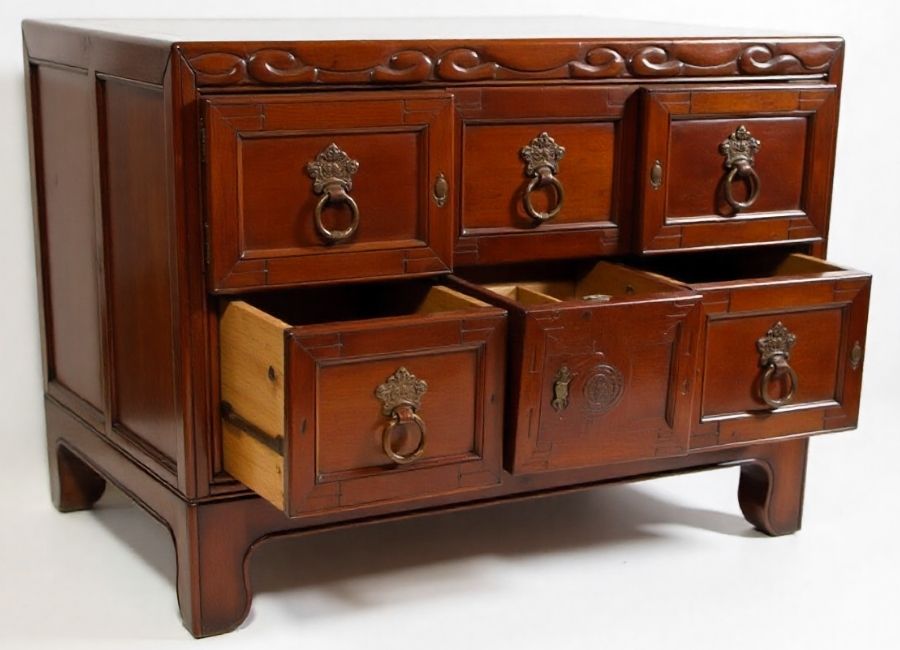Antique Chinese furniture holds secrets within its construction—secrets that can unlock centuries of history and reveal the skilled hands that crafted each piece. Hidden joinery techniques serve as fingerprints of time, offering collectors and enthusiasts valuable clues about authenticity, origin, and age.
Understanding these construction methods transforms furniture examination from guesswork into detective work. The sophisticated joinery techniques developed over dynasties not only created remarkably durable pieces but also left behind a trail of evidence that modern collectors can follow to determine provenance.
This guide delves into the intricate world of Chinese furniture joinery, offering practical tools and knowledge to help you accurately date these remarkable pieces.
Understanding Hidden Joinery in Chinese Furniture
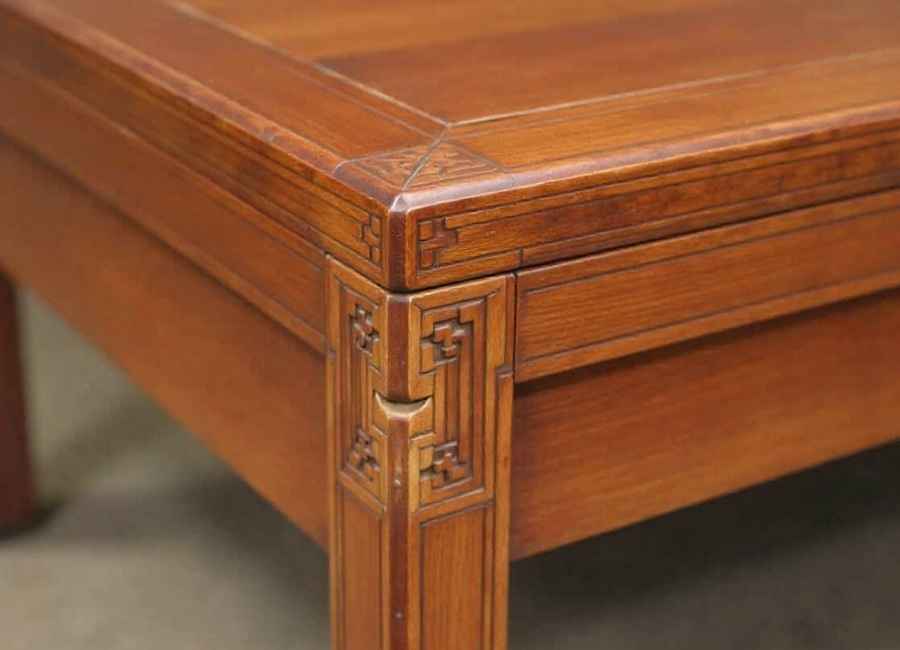
Hidden joinery refers to woodworking connections between timber pieces that remain invisible once construction is complete. This technique was fundamental to Chinese furniture making, enabling the creation of structurally sound pieces while maintaining clean, elegant lines.
Traditional Chinese artisans developed these methods to minimize their reliance on metal fasteners, such as nails or screws. Instead, they relied on precise wood-to-wood connections that often grew stronger over time. The absence of visible hardware wasn’t merely aesthetic—it reflected a philosophy of harmony between form and function.
The sophistication of these joints varied significantly across different periods, making them valuable dating tools for collectors and appraisers.
Key Hidden Joinery Techniques in Chinese Furniture
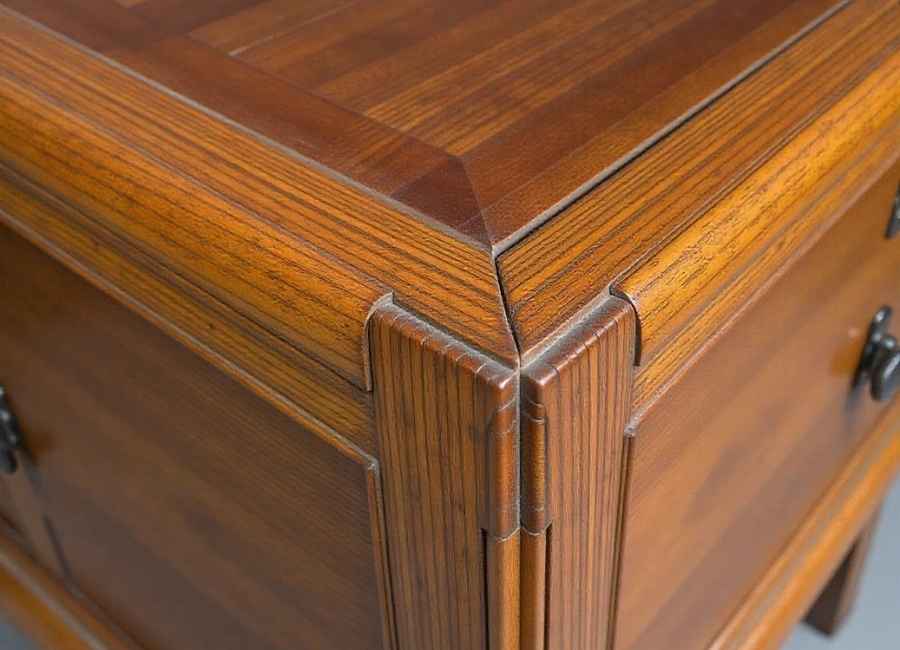
Mortise and Tenon Joints
The mortise and tenon joint represents the cornerstone of Chinese furniture construction. This technique involves cutting a protruding piece (tenon) on one timber that fits precisely into a corresponding cavity (mortise) on another.
Chinese artisans refined this basic concept into numerous variations over centuries. The shape of the tenon, precision of the fit, and complexity of the joint evolved dramatically between dynasties. Early examples feature simpler, more robust connections, while later pieces showcase increasingly sophisticated variations.
Examining the tolerances and execution quality of these joints provides significant dating clues. Ming Dynasty pieces typically display bold, confident joinery with generous tolerances, while Qing Dynasty examples often feature tighter, more precise connections.
Dovetail Joints
Dovetail joints appear frequently in Chinese furniture, particularly for drawer construction and box assemblies. This technique creates interlocking wedge-shaped cuts that prevent pieces from separating under tension.
The evolution of dovetail construction offers clear dating indicators. Hand-cut dovetails from earlier periods show slight irregularities and varied spacing between pins and tails. Machine-assisted cutting, introduced in later periods, produces more uniform spacing and sharper angles.
The ratio of pins to tails, the angle of the dovetail cuts, and the overall execution quality all contribute to determining the age. Earlier artisans often used fewer, larger dovetails, while later work might feature more numerous, smaller connections.
Keyhole Joints
Keyhole joints represent one of the most ingenious hidden connection methods in Chinese furniture. These joints use concealed pins or dowels to secure components, creating powerful bonds while remaining virtually invisible.
This technique appears most commonly in cabinet door construction and panel assemblies. The joint requires exceptional skill to execute correctly, as the keyhole-shaped cavity must be cut with extreme precision to ensure proper fit and function.
Keyhole joints from different periods show distinct characteristics. Early examples often feature hand-forged pins with slight irregularities, while later pieces might use more standardized hardware.
Essential Tools for Examining Hidden Joinery
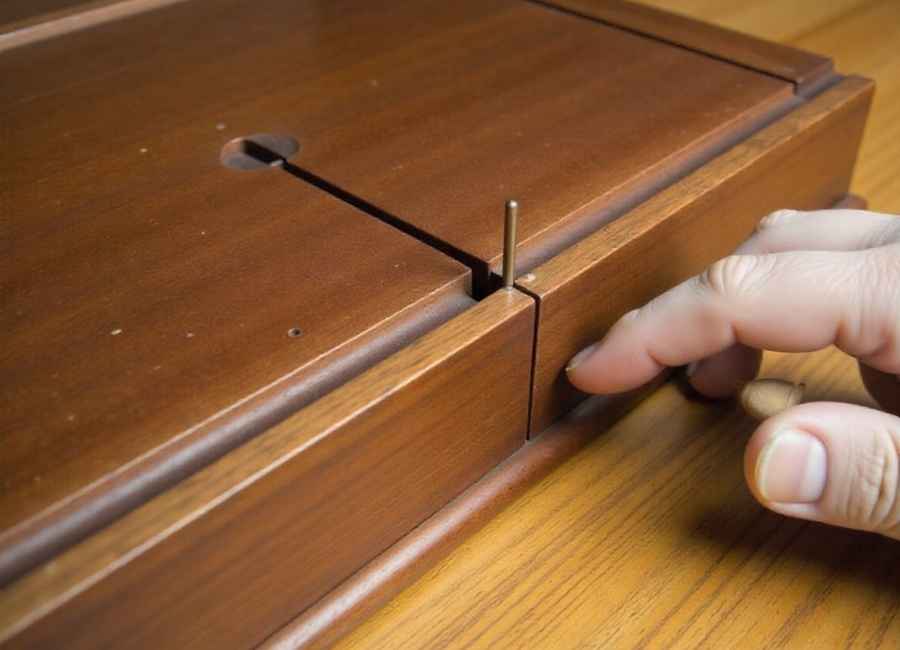
Magnification Equipment
A quality magnifying glass or jeweler’s loupe proves indispensable for detailed examination of joints. Look for magnification between 5x and 10x power to observe fine details without distortion.
Focus on joint tolerances, surface texture, and tool marks. Hand-cut joints often display subtle variations and organic curves, while machine-assisted work shows more consistent patterns and sharper edges.
Pay attention to wear patterns around joints. Genuine age creates specific wear characteristics that differ significantly from artificially aged pieces.
UV Light Sources
Ultraviolet light reveals hidden repairs, replacements, and modifications invisible under standard lighting. Different wood species and adhesives fluoresce uniquely under UV, making alterations clearly visible.
Original wood typically exhibits consistent fluorescence patterns, while repairs made with different materials or modern adhesives appear as contrasting areas. This technique helps distinguish between the original construction and later modifications.
UV examination works best in darkened environments where fluorescence contrast becomes most apparent.
Precision Measuring Tools
Calipers and precision rulers help document joint dimensions and tolerances. Consistent measurements across similar joints suggest the use of machine assistance, while variations indicate the presence of hand craftsmanship.
Record measurements systematically, noting any patterns or inconsistencies that may arise. These measurements become valuable reference points when comparing pieces or researching historical construction standards.
Digital calipers provide the accuracy needed for meaningful comparisons between different pieces and time periods.
Critical Dating Factors Beyond Joinery
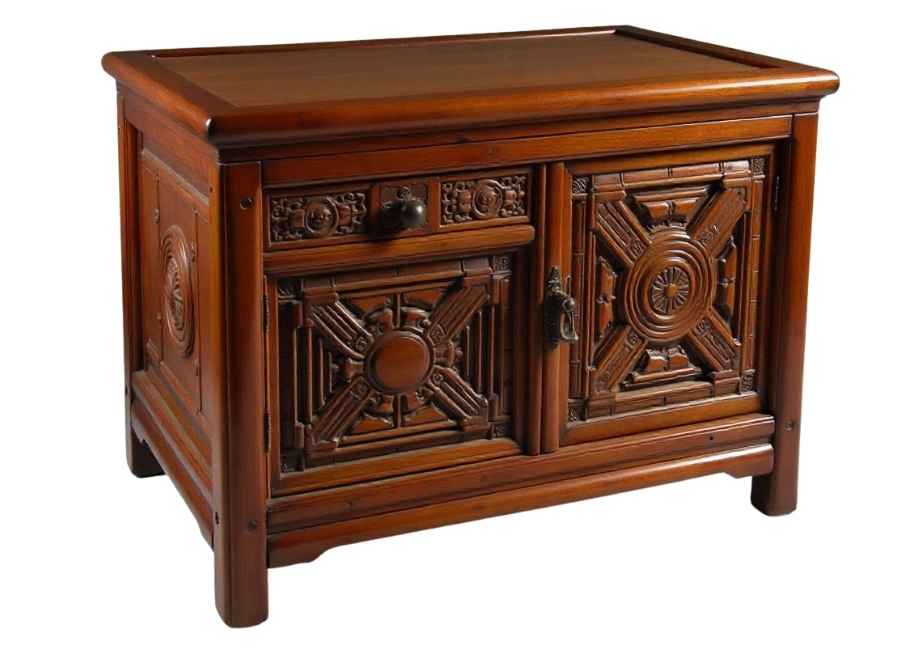
Wood Species Identification
The type of wood used provides crucial information for dating. Huanghuali (yellow rosewood) reached peak popularity during the Ming Dynasty, while zitan (purple sandalwood) became favored during the Qing Dynasty.
Later periods saw an increased use of more common woods, such as elm and pine, as well as various imported species. Economic factors and resource availability influenced wood selection, creating distinct patterns across different eras.
Wood identification requires careful examination of grain patterns, color, and density. Reference materials and expert consultation often prove necessary for definitive identification.
Construction Method Analysis
Overall, the construction philosophy underwent significant changes across dynasties. Early pieces emphasize structural integrity and bold proportions, while later examples often prioritize decorative elements and refined details.
Examine how components connect, the sequence of assembly, and the relationship between structural and decorative elements. These factors reveal the mindset and priorities of the artisans involved.
Machine tool marks, when present, provide clear evidence of later production dates. However, their absence doesn’t guarantee early construction, as hand tools remained common throughout many periods.
Decorative Elements and Carving Styles
Carving motifs and decorative approaches evolved distinctly across different dynasties. Ming Dynasty pieces typically feature restrained, geometric patterns that emphasize wood grain and form. Qing Dynasty furniture often displays more elaborate floral motifs and complex surface treatments.
Regional variations also influence decorative styles. Southern workshops developed distinct aesthetic preferences compared to those of northern manufacturers, creating an additional layer of identity complexity.
Document decorative elements systematically, noting their placement, execution quality, and relationship to the overall design.
Surface Patina and Aging Characteristics
Genuine patina develops over decades through use, handling, and environmental exposure. This natural aging creates specific color variations, surface texture changes, and wear patterns that prove difficult to replicate artificially.
Examine high-contact areas, such as handles, edges, and drawer fronts, for authentic wear patterns. These areas should show gradual transitions between worn and protected surfaces.
Be suspicious of uniform aging across all surfaces, as natural use creates selective wear patterns that reflect actual usage over time.
Bringing It All Together
Dating Chinese furniture with hidden joinery requires combining multiple analytical approaches into a comprehensive evaluation. No single factor provides definitive dating—instead, the convergence of evidence from joinery analysis, wood identification, construction methods, and aging characteristics builds a compelling case.
Start your evaluation systematically, documenting each element methodically—photograph details for later reference and comparison with documented examples. Build relationships with knowledgeable collectors and experts who can provide guidance and verification.
Remember that expertise develops through experience. Each piece examined contributes to your knowledge base, enhancing your ability to recognize authentic characteristics and identify inconsistencies that may indicate later alterations or reproductions.







